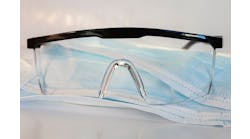So, let’s get this out of the way up top: I’m not Bryce, the smiling face you’re used to seeing on this page every month. Clearly. Don’t worry; Bryce is still here and still works on the publication. But as we closed out 2018, like many of you, we ended the year by taking a hard look at our company and changes we needed to make to help us meet the goals we’ve set for ourselves in 2019.
So, that brings me here to this page and to this debut letter as the editor of FenderBender.
Writing that last sentence was kind of surreal. In some ways, it doesn’t feel that long ago that I started with FenderBender as an intern six years ago. I still remember my first story: It was a “Collision Art” story (something we don’t do anymore) on a shop owner’s restoration of his 1966 Mercury Comet. I didn’t know the first thing about cars—and had to redo the whole story. Oops.
In the years since, I’ve thankfully gained far more knowledge of vehicles and the collision repair industry at large, and I’ve had access to the best shop operators in the country and a first-hand look at the ways they’ve addressed some of the biggest challenges and changes they face. That ingenuity and resourcefulness is one of my favorite parts of covering this industry, and it never ceases to inspire me.
Those qualities are certainly present in this month’s main feature, “Technical Issue.” The technician shortage is, of course, a topic we address frequently in our magazine; this time, however, associate editor Kelly Beaton took a different approach on the subject: Rather than look at how the industry can attract more technicians, he considered how shops can also retain those technicians through better compensation. The solutions that follow are, no surprise, just as creative and sharp as I’ve come to expect from this industry.
It’s a great reminder at the start of the year that solutions to some of our toughest challenges don’t have to be complicated, or even all that original. They simply require a willingness to adapt, to be flexible, and, above all else, to find an answer.
Anna Zeck
Editorial Director
FenderBender



